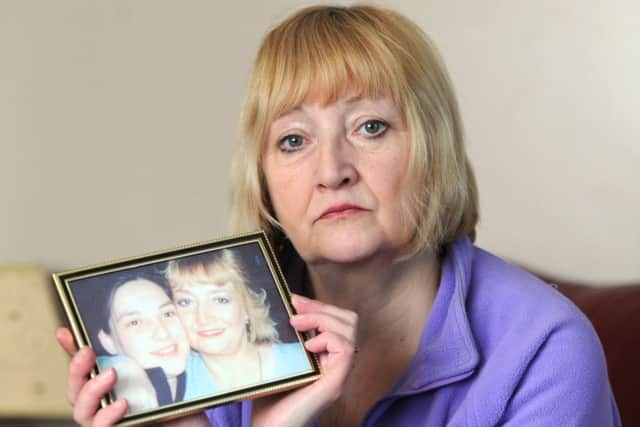Background: After 14 years, the terrible truth about Gemma Simpson


Unanswered questions about what had happened to her, who was responsible, and why, were resolved in a court hearing that offered much heartbreaking detail, but precious little comfort.
Gemma, who grew up in the Harehills area of Leeds, was about to turn 24 when she went missing on May 3, 2000, after telling a friend she was getting on a bus to go to Leeds city centre, and then to Huddersfield.
Advertisement
Hide AdAdvertisement
Hide AdShe was reportedly in good spirits and had no obvious reason to want to vanish.


A smashed window discovered at her home in Compton Terrace, Harehills, was an initial cause for concern but, ultimately, an irrelevant detail.
In fact, as Leeds Crown Court heard yesterday, Gemma had gone to meet Martin Bell, whom she had known for around five years and who had recently been released from psychiatric hospital.
The pair caught a train to his home in Harrogate to smoke cannabis.
Advertisement
Hide AdAdvertisement
Hide AdIt was there that, two days after she had last been seen, and urged on by imagined voices, Bell attacked Gemma with a hammer before dismembering her body and burying it at Brimham Rocks.
Bell was contacted in August 2000 by police investigating Gemma’s disappearance and gave a witness statement in which he claimed Gemma had contacted him on May 7 asking if she could come and stay with him.
He said he had originally agreed to let her but phoned her after changing his mind and claimed he had not had contact with her since.
In the weeks that followed, the police investigation failed to uncover evidence of his lies and the initial flood of publicity about the case eventually dried up. In common with so many missing people cases, the family came to rely on increasingly sporadic appeals in the media to keep Gemma’s case in the public eye.
Advertisement
Hide AdAdvertisement
Hide AdSpeaking in 2013 – 13 years after she disappeared – her mother, Linda Umpleby, spoke of the “unbearable” frustration of not knowing what had happened.
She said: “I have had to live with this for 13 years and it cracks you up. I feel like she’s there by my side all the time. I move my head and she’s there. If anyone has hurt, there is only them and her that know. And we can’t ask her, can we?”
Disturbingly, while the family struggled to come to terms with Gemma’s absence, Bell appeared able to put the horrors of May 5, 2000, behind him.
As prosecutor Simon Myerson QC told the court: “The defendant carried on with his life without coming to the attention of the police.”
Advertisement
Hide AdAdvertisement
Hide AdIn 2007 he met a woman from Portugal who moved to the UK to live with him the following year. The court heard Bell was controlling and violent before the relationship eventually ended in 2011.
However, the pair remained in contact and, in July of this year, Bell broke down and owned up to the woman about the killing.
Having been persuaded to come clean, Bell subsequently walked into a police station in Scarborough to confess.
Asked why it had taken so long, he told detectives he had considered admitting the crime earlier but didn’t want to cause distress for his mother and was concerned about losing his freedom.
Advertisement
Hide AdAdvertisement
Hide AdBell will be sentenced on Friday and his loss of liberty is now inevitable.
After living so long without answers, it can only be hoped that the conclusion of the case will bring the closure Gemma’s family craves.